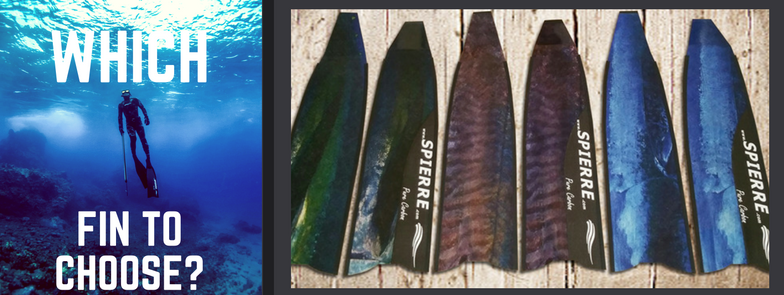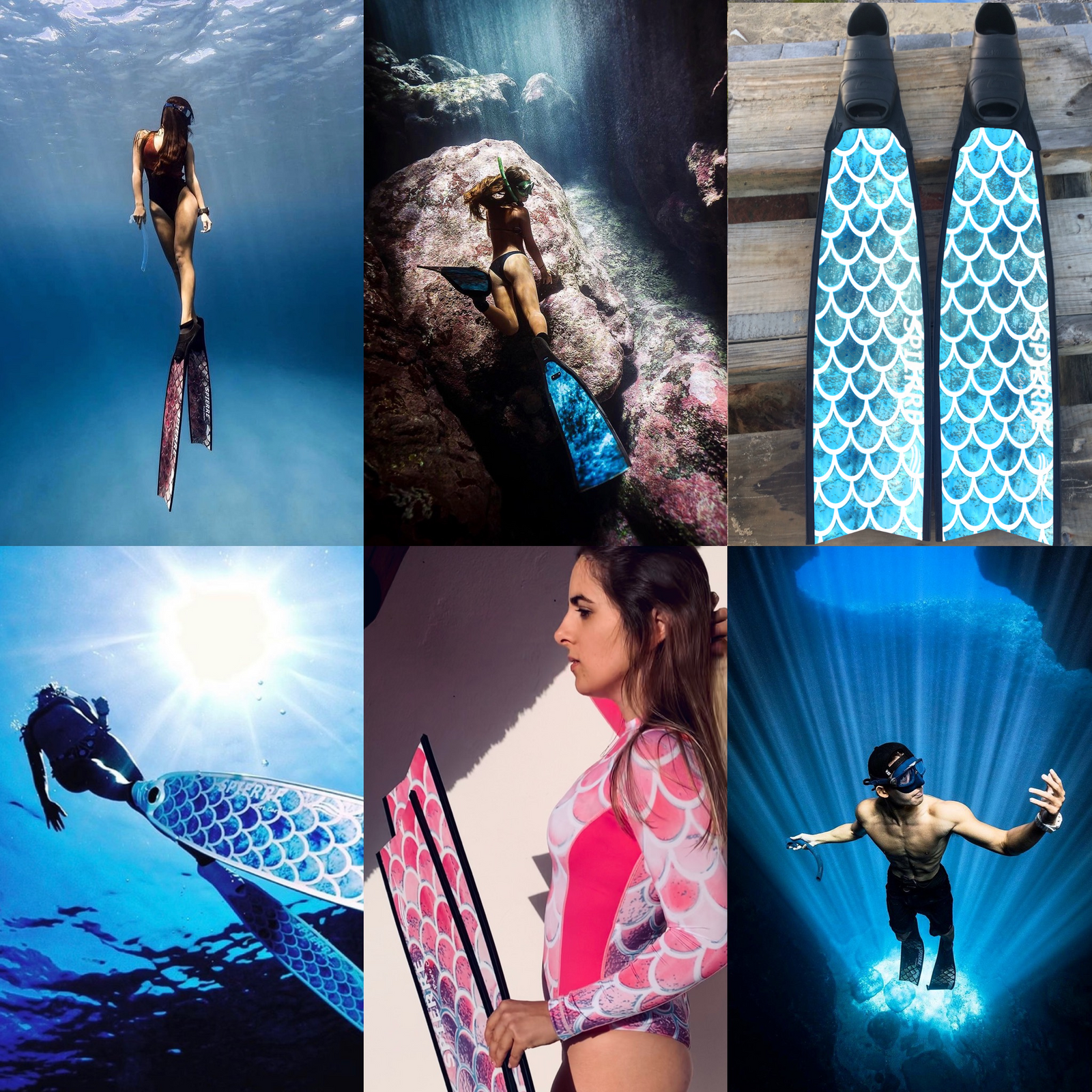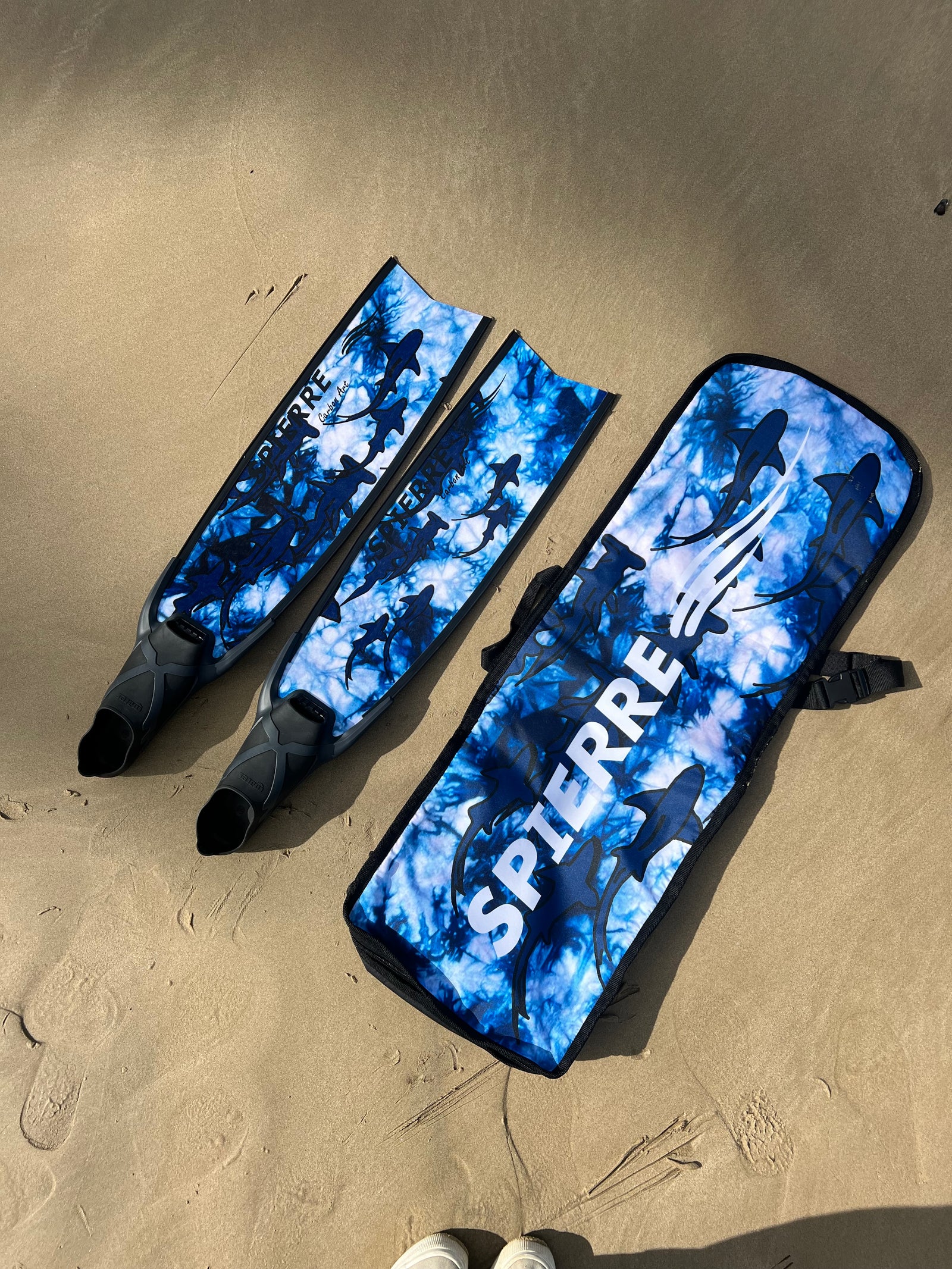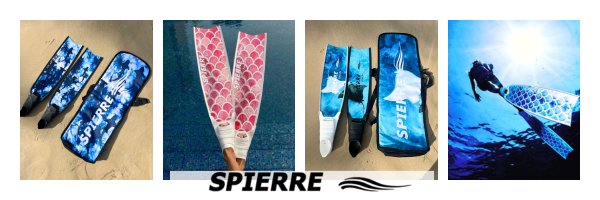Selecting the Right Fin

As freediving and spearfishing have developed, divers have become more educated and selective with their equipment and are looking for better performance and workmanship from their fins than ever before. The selection of blades and fins has also proportionally increased and there are some excellent fins available that will give you the best underwater propulsion, conserving your oxygen usage and taking you to deeper depths than ever before. But choosing the right blade need not require a degree in propulsion physics and in this article we’ll try to simplify the process for you to find a blade that will suit your needs. The following tips should help guide you in your selection. Keep in mind that every diver has unique needs and "one size does not fit all".
What type of diving am I doing?
Think about the areas and type of diving that you do most of the time. There is no one perfect blade for all conditions that will suit every diver and you’ll need to consider what type of diving you’ll be doing predominantly if you’re going to use one set of blades. The fin blades should work in other conditions as well but should be most suited for your everyday diving. For example, if you are going to be doing shore entries over rocks and long surface swimming, you’ll need a strong robust blade, yet soft enough not to tire your legs with enough propulsion to get you through the backline and swim against currents. A good example of this is a fiber composite in a suitable stiffness to suit your weight and leg strength or a well constructed Carbon fibre blade. This said, it is also dependent on the the type of stress the blades would be expected to endure (e.g. strong shore breaks). Generally fiberglass composite fin blades will be more robust but that said, we've had customers diving under these conditions with their Pure Carbon blades for 10 years without a fin breakage. If you’re going to be doing mostly deep boat dives where you dive at deeper depths and you are relatively fit with well-trained legs, you’ll most likely be after a high-performance type of blade such as a Carbon or Pure Carbon to suit your weight and leg strength. This blade should get you back to the surface comfortably without burning off too much oxygen.
Your build and fitness level
Generally a fit diver will be able to dive a slightly stiffer blade and a lesser fit diver would start with a softer blade and as his leg strength and fitness increases, work his way to a stiffer blade over time. What could start out feeling like a stiff blade, especially when diving with carbon fiber for the first time, could very well feel softer over a couple of months as you get into your blades and you can handle greater resistance. You will also find that you will naturally refine your finning technique to get the most out of your blades. The drawback if you are diving a too hard blade, is that it could force your legs into a bicycle action kicking style, increasing the drag and becoming counter-productive and producing a poor finning style. It’s important not to start off with a blade that has too much resistance in proportion to your ability at the time.
Factors that could influence your selection are your leg muscle strength and your ankle strength and your height in proportion to your weight. As a rough guide, the following table should give you an idea as to the type of stiffness blade that would suit you. Keep in mind that if you weigh 65kg’s and dive or exercise regularly, with very strong, well-developed leg muscles and strong ankles, you will more than likely benefit from a stiffer blade than an occasional diver of the same weight with untrained leg muscles who would most likely go for a softer stiffness blade:
|
60 – 70kg - Soft |
|
70 – 85kg – Medium |
|
85 – 100kg – Medium/Hard |
|
100 – 125kg - Hard |
This is not an exact science though and there can be many variations where one of the benefits of a custom blade comes into play. We’ve found that as a diver becomes accustomed to diving with composite blades, they develop a taste for what they prefer in a fin blade. Different areas and parts of the world also affect personal preferences for example a diver in a warm water area is generally able to dive for longer periods and although fit, would be looking for a longer, softer fin blade that allows them to spend long periods underwater without putting strain on their legs.
If you are unsure about what stiffness blade you need, it’s always best to err on the softer side than going for too hard a blade, as it will just simply drain your energy if it’s too stiff for you. If you are fit however, you could benefit from a slightly stiffer blade. A too soft blade, again, will feel softer and require less leg work when finning which could work very well for free diving without any significant load, but if you’re ascending from depth and require the blade to respond to get you to the surface, especially swimming a large game fish up, a too soft blade might not give the amount of torque needed to get you back to safety.
Width and Length of the blade:
The width of the blade as well as the length is a factor that needs to be considered. The width will determine the amount of water displaced while finning and the blade should offer good forward propulsion. The length will facilitate the bend of the blade as well. A good overall width and length for a spearfishing blade in Southern hemisphere waters is 21-22cm wide by 78-80cm in length. This length blade should allow for good propulsion and easy directional changes where necessary.
By following the above guidelines, as an example, if you are a 75kg diver who keeps relatively fit when not diving, regularly dives game fish reefs with stronger currents and dives mostly between 10-20m depths, targeting yellowtail and bottom fish in strong currents, you would most likely benefit from a Medium/Stiff strength, 80cm length blade that is 21cm wide while a diver who is diving in warmer waters with less current, doing shore and boat entries with long surface swims and diving up to 30m depths, could possibly benefit from a longer, softer blade. We take all of the above into consideration when manufacturing a set of custom fin blades.
Camouflage:
There is a growing trend for camouflage blades while hunting underwater and there are some very nice camo blades on the market. We’ve found that as diver’s tastes are becoming more sophisticated and underwater cameras more common-place, we have divers sending images, to us, of their specific underwater reefs or wetsuit camo’s and requesting camo composite blades to match these. Some might even opt for different designs for different areas e.g. for open-water blue ocean hunting and another for reef and kelp hunting. This won’t be much of a factor in the basic blade design and stiffness choice, but can be a nice enhancement to your blades.
Foot Pocket:
The correct foot pocket and blade pairing is essential, an ill-fitting or poorly designed foot pocket can cause even an excellent blade to under perform. The energy transfer from leg to foot pocket to blade is important and the foot pocket needs to fit well and have the right support under the foot and softness in the rubber side arms. When selecting a foot pocket, take note of your foot shape, the height of your bridge and the width of your foot. A good foot pocket will form a unit with a top performance blade and in turn with your foot and it’s wise to try a few different types on before buying. Adding a rubber fin guard to your foot pocket will not only prevent your fin from being possibly washed off your foot during shore entries, but will also ensure that there is no movement and that the foot pocket remains firm on the foot, even when your neoprene socks are compressed at depth which can result in a loose fitting foot pocket while coming off the bottom after a deep dive.
While there are a host of theories and technicalities about fin design that we could have included, and the debates as to the best blades, materials, finning styles and technologies are often hotly contested on forums, in this article we’ve aimed to give you the basics about choosing a blade that will work well and we hope that it’s been of help to you. If you have any questions you are welcome to contact us at info@spierre.com
Also in Spierre News & Updates

New Freedive Inspired Apparel
The new freediving designs inspired Spierre Apparel Range is here to revolutionize your above water experience.
Shop our range of Mens and Womens Hoodies, T-Shirts, Tote bags etc. with Freedive and Spearhunting Designs.

Spierre Fin Blades Custom Options Explained

Spierre Fins Production
Each set of Spierre Fin blades, is custom handcrafted to order and the production time will take about 5 - 6 weeks (depending on the volume of orders in production when placing your order).
If you have a trip coming up, or need your order sent to you sooner than this, please mail us at info@spierre.com to find out if we can put a rush on your order.

